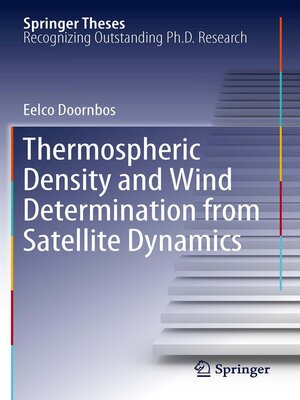Thermospheric Density and Wind Determination from Satellite Dynamics
ebook ∣ Springer Theses
By Eelco Doornbos

Sign up to save your library
With an OverDrive account, you can save your favorite libraries for at-a-glance information about availability. Find out more about OverDrive accounts.
Find this title in Libby, the library reading app by OverDrive.



Search for a digital library with this title
Title found at these libraries:
| Library Name | Distance |
|---|---|
| Loading... |
The Earth's atmosphere is often portrayed as a thin and finite blanket covering our planet, separate from the emptiness of outer space. In reality, the transition is gradual and a tiny fraction of the atmophere gases is still present at the altitude of low orbiting satellites. The very high velocities of these satellites ensure that their orbital motion can still be considerably affected by air density and wind. This influence can be measured using accelerometers and satellite tracking techniques.
The opening chapters of this thesis provide an excellent introduction to the various disciplines that are involved in the interpretation of these observations: orbital mechanics, satellite aerodynamics and upper atmospheric physics. A subsequent chapter, at the heart of this work, covers advances in the algorithms used for processing satellite accelerometry and Two-Line Element (TLE) orbit data. The closing chapters provide an elaborate analysis of the resulting density and wind products,which are generating many opportunities for further research, to improve the modelling and understanding of the thermosphere system and its interactions with the lower atmosphere, the ionosphere-magnetosphere system and the Sun.
The opening chapters of this thesis provide an excellent introduction to the various disciplines that are involved in the interpretation of these observations: orbital mechanics, satellite aerodynamics and upper atmospheric physics. A subsequent chapter, at the heart of this work, covers advances in the algorithms used for processing satellite accelerometry and Two-Line Element (TLE) orbit data. The closing chapters provide an elaborate analysis of the resulting density and wind products,which are generating many opportunities for further research, to improve the modelling and understanding of the thermosphere system and its interactions with the lower atmosphere, the ionosphere-magnetosphere system and the Sun.







